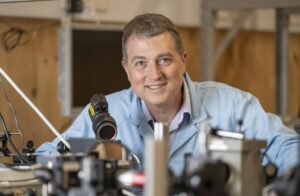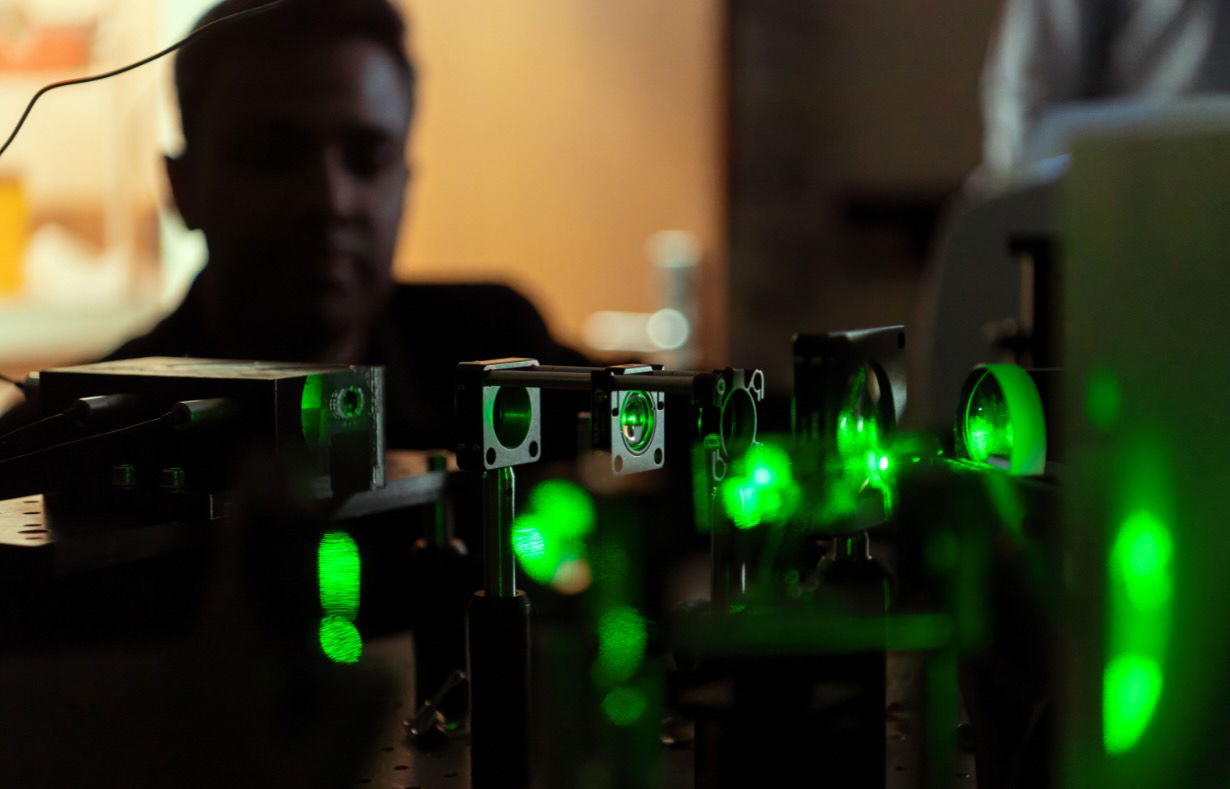Australia’s ARC Centre of Excellence for Transformative Meta-Optical Systems (TMOS) is working to overcome the limitations of present-day optical technologies with meta-optical systems that manipulate light.
Existing optics enable the communications and imaging technologies by employing the unique properties of various materials and shapes to manipulate light in different ways. While researchers have uncovered many ways to reflect, refract, and transmit light, the previously unsurpassed boundary imposed by present technological barriers is one that the TMOS team, under the leadership of Professor Dragomir Neshev, is now set to cross.
Meta-Optical Systems
TMOS’s meta-optical systems consist of millions of nanostructures, as varied as their larger cousins, and which similarly allow for generating, manipulating, and detecting light in a range of ways. What makes the system unique is that these new nanostructures enable new interactions with light that are not possible with larger-scale optical systems.
While novel light manipulations are interesting, miniaturization is the practical result at the forefront of TMOS’s work. Among their initial applications for meta-optics technologies are attempts to reduce the size of mobile phone camera lenses, which is a major obstacle to producing thinner smartphones. They also envision their work reducing the cost and difficulty of producing other similar items, such as miniature sensors used in early disease detection.
 Dragomir Neshev, seen with a meta-optical system (Image Credit: ARC)
Dragomir Neshev, seen with a meta-optical system (Image Credit: ARC)
Rethinking Quantum Communications and More
While quantum technologies, ranging from computing to communication, offer numerous hopeful potentialities, they have yet to come to fruition due to the real-world limitations of any device operating through quantum means.
Currently, the practical applications remain elusive, with many experiments relegated to laboratory curiosities and demonstrations of technology. With quantum communications, such systems require a sterile, clean environment and cryogenic cooling to operate, which is infeasible for large-scale use despite the technology’s high degree of information security.
Nonetheless, TMOS researchers claim that meta-optics will enable a reduction in complexity, leading to room-temperature quantum communication systems. Additionally, the team is working to bring their work to wearables, a category that has struggled for more than a decade since the introduction of Google Glass.
“Everybody has seen science fiction movies with glasses that project things. I feel like we are actually very close to this science fiction,” said Professor Neshev.
Support for TMOS
TMOS relies on the contributions of 142 researchers spread between five Australian universities, with additional support from 18 international institutions. Over 100 private companies are also engaged, including some looking to bring augmented reality glasses to market using TMOS’s advances. Neshev believes that remaining grounded in industry partnerships is important as it ensures that their work is relevant to real-world concerns.
“What we’ve seen in the last couple of years is big companies have invested billions of dollars into these technologies,” Neshev said.
One of those partnerships TMOS has been specifically focused on delivering solutions for is a driver fatigue monitor currently being developed by one of TMOS’s collaborators.
“[The company] came to us and said they need to squeeze all these tiny elements that can detect if the driver is fatigued or not… and they need to do this with very little space, which they realised quickly is not possible in any conventional way,” Neshev explained.
Fundamentally, Neshev and his team’s mission continues, although as the old adage goes, part of the enjoyment of it all has been the journey, rather than merely the race to attain working applications for their technology.
“I’m humbled but also very proud to lead this Centre of Excellence,” Neshev said in a statement. ”I think everybody in the entire Centre works really well as a body with a joint mission and joint vision to deliver what we have put in our plans, and it’s just a pleasure to lead such a Centre.”
“I take this as my biggest achievement,” Neshev said.
Ryan Whalen covers science and technology for The Debrief. He holds an MA in History and a Master of Library and Information Science with a certificate in Data Science. He can be contacted at ryan@thedebrief.org, and follow him on Twitter @mdntwvlf.

